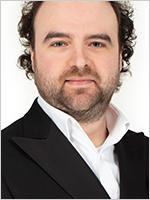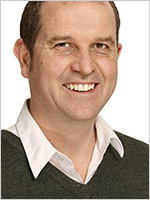
Dendrochronology Analysis & Reports
What is Dendrochronology?
Dendrochronology is a scientific method of dating based on the growth rings of trees. Each year trees produce a ring, the dimensions of which vary from year to year, according to the environment in which they find themselves. Ring growth from the spring is wider and lighter, while the darker, late summer growth narrows before stopping, forming a sharp boundary. They are also affected by temperature and precipitations. The resulting pattern is a little like a barcode, and by comparing the pattern from a particular tree with already established chronologies, dendrochronologists can date the time at which the rings were formed to an exact year.
Dendrochronology is used to date instruments by comparing the tree rings of the wood used for the top with spruce reference chronologies from the Alps (the source of most classical makers’ wood). The rings are also compared with other examples by the same maker and contemporary makers from the same area. The result gives the youngest possible date for the spruce, thereby helping to establish whether an instrument is genuine.
Tarisio’s Dendrochronology Reports
At Tarisio we use dendrochronology to help support existing attributions for our high-value lots. The dendrochronology reports are made available to buyers for use as supporting documentation.
Peter Ratcliff
Tarisio’s dendrochronology is carried out by Peter Ratcliff, a UK violin restorer for the last 30 years. Over the past decade Peter has developed one of the world’s most extensive dendrochronological databases and is now one of the leading experts in the field. Peter offers dendrochronological testing and reports on instruments of the violin family, as well as early guitars.
Tarisio's People
• Directors •


Jason Price
Founder, Expert, Director
Jason studied the cello from an early age and became interested in violin making and restoration while searching for his first serious cello. At the age of 18, he enrolled at Cremona’s school of violin making, but lasted just two weeks there before deciding to study with Renato Scrollavezza in Parma. After living and working in Cremona and Parma for three years and completing nine and a half violins he returned to the US, where he took up a degree in English Literature at Williams College in Massachusetts.
It was towards the end of Jason’s degree course that the idea of starting Tarisio was born, and the company was launched in 1999. In recent years Jason has concentrated on broadening the reach of Tarisio with several initiatives including expanding to London and Berlin and concentrating on higher end instruments through discrete private sales.
Jason is the expert for all of Tarisio’s attributions and visits New York, Berlin and London each once a month. He is the curator of the Cozio Carteggio and believes that a conservative and transparent approach to expertise is the way of the future.

Carlos Tome
Director, Head of Sales

Carlos Tome
Director, Head of Sales
Carlos Tome oversees all Private Sales across Tarisio’s global offices. His expertise lies in providing a personalized approach to match each client with their ideal instrument. In addition to leading Tarisio’s Private Sales, Carlos has played a major role in the critical success of Tarisio’s business development, expansion, and auctions, many of which have set world records. In 2015, he became partner at Tarisio.
Born in Madrid, Carlos moved to New York City in 2002. Having graduated from the Royal Conservatory of Music as a violinist, he possesses first-hand knowledge of the particular concerns performers face when searching for instruments. He prioritizes delivering a customized experience to each client, recognizing that every interaction requires a personalized approach. He enjoys working with a diverse clientele, including high-profile artists, students, music lovers, investors, and collectors.
Carlos has always been passionate about fine string instruments and bows and enjoys sharing the knowledge he has garnered throughout his career. He has presented talks at venues such as Lincoln Center, The Hong Kong Jockey Club, Tsinghua University in Beijing, and Goldman Sachs, among others. He currently serves as Vice Chair on the Board of Directors for the Orchestra of St. Luke’s and is a board member of Ensemble Connect at Carnegie Hall. Previously, he served on the boards of the Polyphony Foundation and Young Concert Artists.
Berlin

Martha Woodhams
General Manager & Head of Auctions

Martha Woodhams
General Manager & Head of Auctions
Martha handles the strategic, financial and day-to-day operations for the European offices. With a particular focus on international trade compliance, she helps to ensure smooth worldwide movement of our instruments and bows. Having sung in church and school choirs from a young age, Martha went on to read Music at King’s College London, during which time she also studied abroad at the University of Hong Kong. Since graduating in 2017, she continues to enjoy organising and singing in local ensembles whenever the opportunity arises.
After 5 years at Tarisio’s London office, Martha moved to the Berlin office in January 2023 to strengthen its operations and lead the new team.

Nicholas Dodds
Sales Associate

Nicholas Dodds
Sales Associate
Since his introduction to the violin at the age of 5, Nicholas has developed a deep-rooted passion for classical music. Nicholas holds a BA in Business Administration and Economics from Zeppelin University, as well as an MSc in Behavioural Economics from The London School of Economics and Political Science. His role at Tarisio encompasses building and maintaining relationships with patrons, collectors, professional musicians and amateurs alike in order to be able to support them in their search for their perfect fine instrument or bow. When Nicholas isn’t at work, you will likely find him cooking unnecessarily complicated meals for his friends and family.

Susan O’Carroll
Office Administrator

Susan O’Carroll
Office Administrator
Susan is the Office Administrator for the Berlin office. Susan’s love for music began at the tender age of 4, when she began studying piano. She holds a BA (Hons) from Maynooth University in Music, Irish, and Latin, and a first-class Masters in Musicology from University College Dublin, with a dissertation specialising in the Classical and Romantic Piano Concerto. Her research has been published in the international peer-reviewed journal The Musicology Review in 2016.
Previously, Susan worked for the European Commission in Brussels, where she spent nearly three years working in legal translation administration, and BIMM Berlin where she was the College Receptionist and Administrator. Susan was a piano teacher, accompanist, and performer for seven years between 2010-2017. Since 2017, Susan has been a member of The English Choir Berlin, performing monthly Evensong in Berliner Dom as well as undertaking international tours, and was a member of the award-winning Cuore Chamber Choir in Dublin in 2022.

Xiaofu Wang
Photographer

Xiaofu Wang
Photographer
Xiaofu Wang is responsible for Tarisio’s photography in Berlin. She holds a BA in Media Arts and Production from the University of Technology, Sydney. Alongside her work for Tarisio, she does documentary and portrait work. Her images have been published in The Guardian, Le Monde, Arte, NME and Pitchfork.

Philip Aleksandrowicz
Account Coordinator

Philip Aleksandrowicz
Account Coordinator

Belen Lopez Baos
Luthier

Belen Lopez Baos
Luthier

Weronika Furmanowicz
Cataloguer & Workshop Assistant

Weronika Furmanowicz
Cataloguer & Workshop Assistant
London

Matthew Huber
Head of Tarisio London

Matthew Huber
Head of Tarisio London
Matthew Huber joined Tarisio’s sales team having developed an interest in fine instruments from a young age. As an active soloist and chamber musician he has studied the cello with many of the world’s most respected pedagogues in Europe and America. His discerning musical ear and knowledge of fine instruments makes him a valuable asset to the firm.
Matthew welcomes the challenge of pairing a player with his or her dream instrument, as well as promoting the internet auction as an honest, transparent and expanding platform throughout Europe. He looks forward to welcoming you to the London office.

Samuel Johnson
Account Coordinator

Samuel Johnson
Account Coordinator
Sam grew up in a family of musicians, and having started learning the violin at the age of 9, he went on to study music at The University of Chichester Conservatoire. During his years of study, his interests were shifted towards the history of violin making and the world of auctions.
Outside of work, Sam enjoys playing the violin in various ensembles and competing against friends in various sports.

Franziska Deschner
Cataloguer & Workshop Assistant

Franziska Deschner
Cataloguer & Workshop Assistant

Rosanna Lowe
Office Administrator

Rosanna Lowe
Office Administrator

Jonathan Larkman
Luthier

Jonathan Larkman
Luthier
Jonathan carries out tonal adjustments, setups and more extensive restoration work for Tarisio’s London office. Having studied violin making and restoration at Merton College, Jonathan was offered an apprenticeship with J. P. Guivier, after which he worked in the main workshop for 13 years. In that time he established his own business as Luthier in Residence for Trinity College, where he has carried out work for professional players and dealers alike. He has maintained his interest in modern making and has been fortunate to work alongside many respected contemporary makers.

Daniel Lane
Photographer

Daniel Lane
Photographer
Daniel Lane produces all the catalog photography for Tarisio’s London office. He has been a professional photographer since 1999 and holds a BA in Photography and a Masters with Distinction. His work as a documentary photographer has led him to shoot photostories in many different countries, from hospitals in Madagascar to gold miners in Laos to ultimately win the London Fringe Photography Award in 2009. Daniel also enjoys working in the studio for Tarisio and other clients including Valentino, Patrick Cox and Boots to name a few.

Florian Bailly
Bow Restorer

Florian Bailly
Bow Restorer
New York

Robert Bailey
Head of Photography

Robert Bailey
Head of Photography
Robert Bailey manages the New York, London, and Berlin photography studio operations and is also responsible for maintaining Tarisio’s extensive digital archive. He has photographed thousands of instruments and bows since joining Tarisio in 2010, most famously the ‘Lady Blunt’ Stradivari sold in 2011, and has fine-tuned the techniques necessary to create the highest quality images.
Robert studied photography at Ohio University and went on to work as a commercial photographer for clients including United Airlines, Nike and the United Nations. His images have been published in the New York Times as well as being featured on The Today Show, The Discovery Channel and NBC’s Nightly News. He also served as an adjunct professor at Ohio Northern University and has lectured at the School of Visual Arts, Rochester Institute of Technology and The International Center of Photography.

Kevin Turvey
Logistics Manager

Kevin Turvey
Logistics Manager

Ben Gagnon
Junior Specialist

Ben Gagnon
Junior Specialist
Before joining Tarisio in April of 2022, Ben attended Colgate University with a focus in Music and Political Science. He studied composition and audio production under the guidance of Emmy-nominated composer Ryan Chase. While at Colgate, Ben was the principal bassist in the Colgate University Orchestra and a Student Senator. Outside of Tarisio, Ben operates a small record label where he produces and DJs. Ben looks forward to connecting and working with Tarisio customers.

Sungjong Noh
Senior Luthier

Sungjong Noh
Senior Luthier
Sungjong Noh stepped into the violin making world influenced by his father who is also a violin luthier. Sungjong graduated from the Chicago School of Violin Making in 2011 and he was the first early graduate student in the school’s history. After graduating, he further developed his violin luthier hand skills at a local shop in New Jersey. During this time, he was also taught by Paul Wiessmeyer and Carlos Arcieri and continued to improve his skills to serve more musicians. Most recently, he worked at Reed Yeboah Fine Violins and joined Tarisio in 2022.

Carmen Van Ameringen
Property Controller

Carmen Van Ameringen
Property Controller
Because of her family’s love for music and the arts, Carmen Van Ameringen developed a deep love for classical music and instruments at an early age. As a violin player through grade school, her passion for fine arts took over when she went to Kennesaw State University and studied Painting, Sculpture, and Spanish. When not wearing her Property Controller hat at Tarisio analyzing the wonderful instruments and bows, Carmen can be found at the Students Art League carving wood and stone, working on client oil portraits, and searching for live music spots around town. She holds a Certificate in Healthcare Support from AUT in NZ and a BFA in Painting & Sculpture from KSU.”

Elise Kolle
Account Coordinator & Catalog Supervisor

Elise Kolle
Account Coordinator & Catalog Supervisor
Elise Kolle joined Tarisio in December 2022 having previously specialized in historical harps, and she is delighted to be working with the bowed stringed instruments at Tarisio!
Elise holds bachelor’s degrees in harp performance and musicology from the New England Conservatory of Music and a master’s in musicology from the University of Glasgow. Her master’s thesis focused on the depiction of female harpists in eighteenth-century European portraiture. Elise was previously a Fulbright scholar in Stockholm, Sweden, studying the provenance and performance practice of the eighteenth-century harp. She has previously worked for the Boston Symphony Orchestra and the Atlanta Symphony Orchestra. She remains an active performer on early and modern harps and particularly enjoys studying the intersection of music and visual art.

Robert Lund
Website Designer/Administrator

Robert Lund
Website Designer/Administrator
Robert Lund created a new website for Tarisio in 2008, and is responsible for all of its complex operations, including a separate in-house website where staff members maintain the ever-growing database of instruments, customers, and online financial transactions. With a Bachelor’s Degree in Electrical Engineering from The Cooper Union and a Master’s from Stanford University, he worked on Picturephone at Bell Labs for five years, and then designed computer software and hardware in the broadcast television industry for many years. Tarisio represents the culmination of his work designing websites for the past ten years.
A musician since his youth, Robert has built his own harpsichord, served as a church organist and choirmaster, and played keyboards in various bands throughout his life. He enjoys the overlap between his two life interests afforded by the Tarisio project.

Benjamin Matejka
Senior Client Liaison - Client Relations

Benjamin Matejka
Senior Client Liaison - Client Relations

Susan Janowsky
General Manager & Head of Auction

Susan Janowsky
General Manager & Head of Auction

Cassandra Gibson
Marketing & Creative Lead

Cassandra Gibson
Marketing & Creative Lead

Patrick Wood
Head of Financial Products

Patrick Wood
Head of Financial Products
Paris

Marie Turini-Viard
Senior Specialist

Marie Turini-Viard
Senior Specialist
After graduating with degrees in Physics and Musicology from La Sorbonne, Marie moved to New York and began working at Tarisio in 2010. A strong curiosity in the history of violin making, along with handling over a thousand instruments and bows a year, led her to take on the role of Specialist while getting accredited by the Appraisers Association of America in 2015. She returned to Europe in 2017 to be the Head of Operations in the London office.
Marie is now Tarisio’s Senior Specialist and lives in Paris. She continues to handle consignments for all Tarisio offices as she frequently travels throughout Europe. She looks forward to discussing the best strategy for sale for your instrument, whether at auction or through private sales!
Sign up to our newsletter